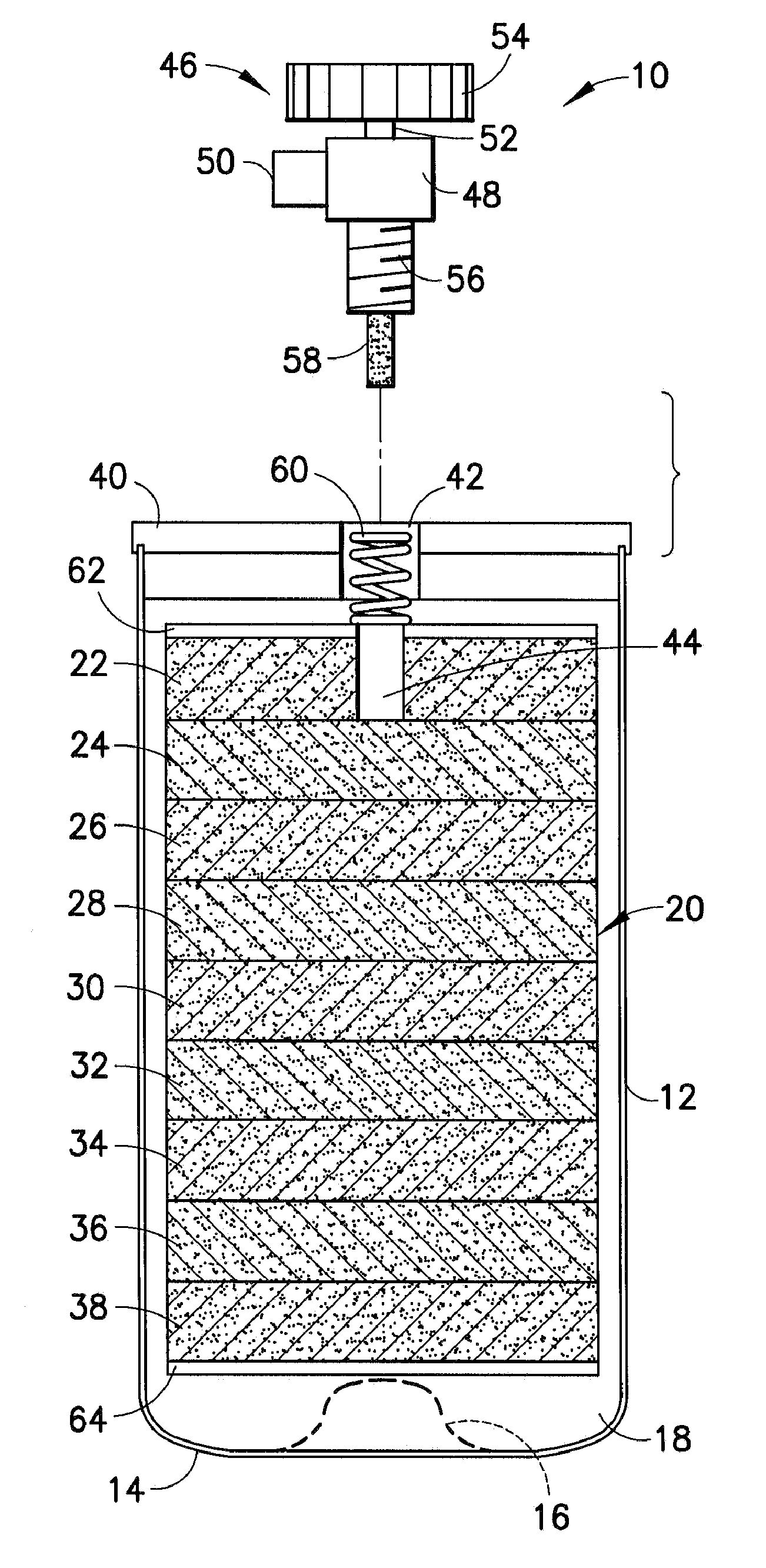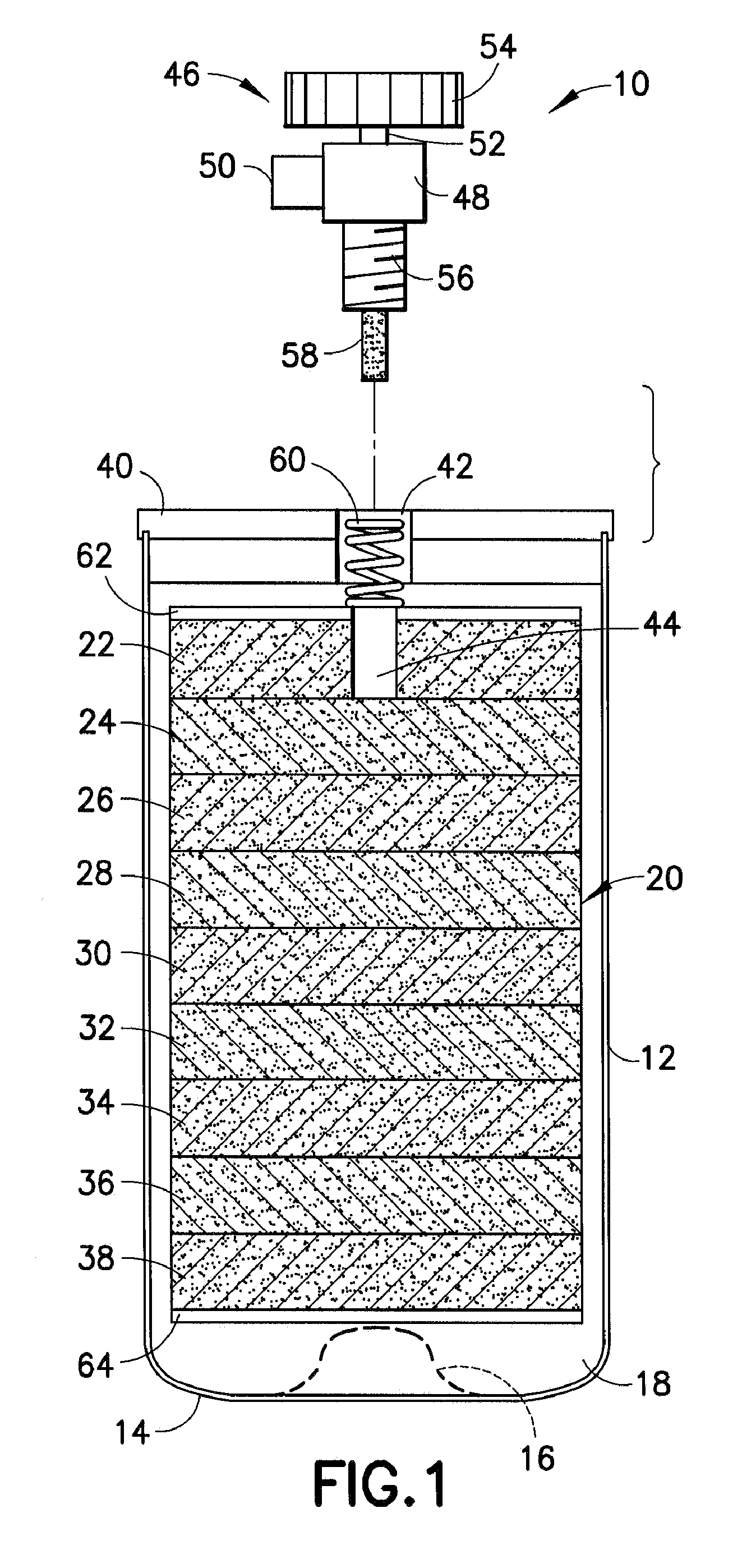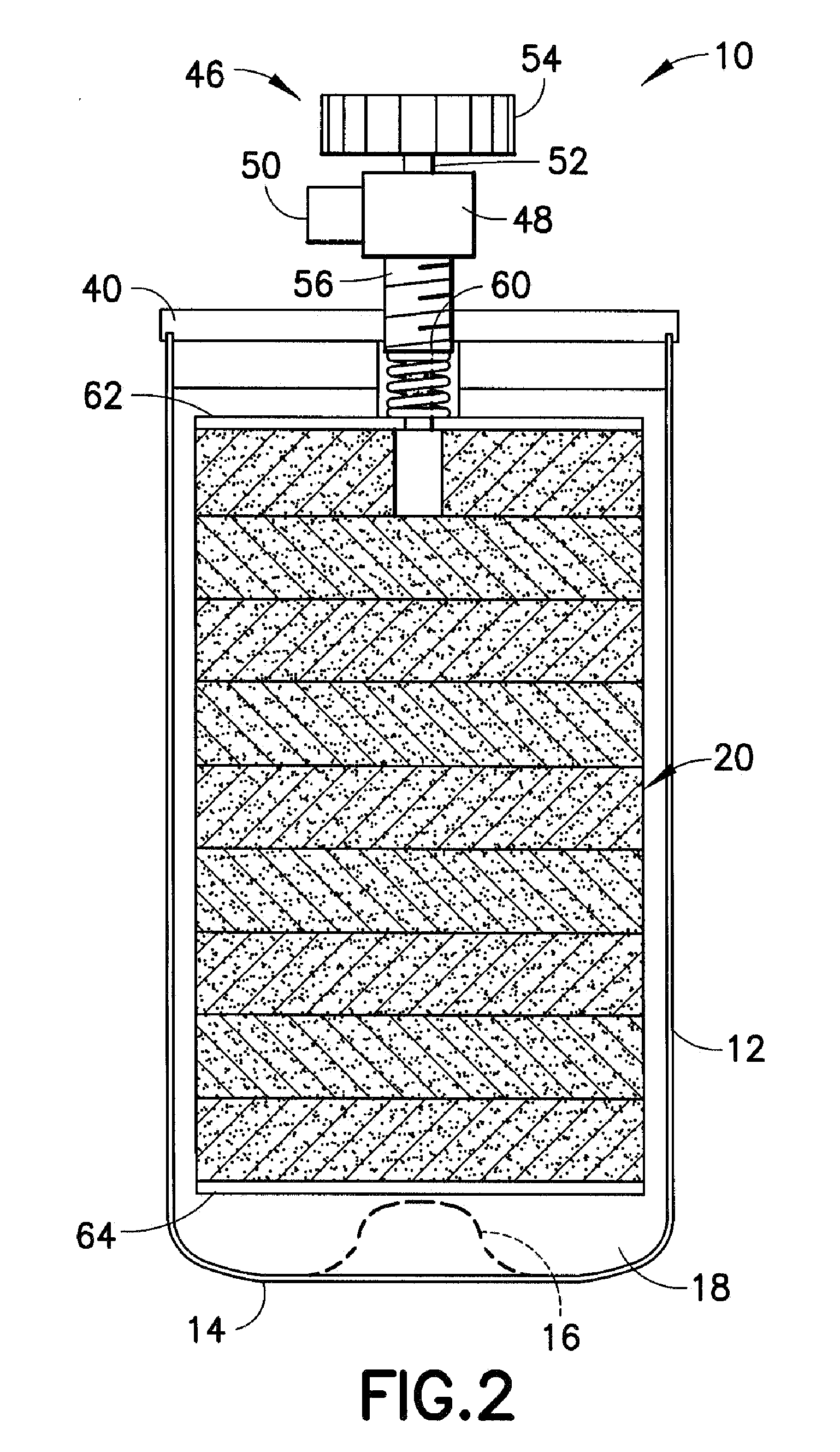Nanoporous articles and methods of making same
- Summary
- Abstract
- Description
- Claims
- Application Information
AI Technical Summary
Benefits of technology
Problems solved by technology
Method used
Image
Examples
example 1
[0198]In a standard fill procedure for boron trifluoride gas storage and dispensing packages, a cylindrical gas vessel is filled with a stack of activated carbon pucks, and a headpiece is welded to the gas cylinder. The cylinder fabrication then is completed by installation of a valve head assembly on the headpiece.
[0199]The resulting gas supply package with the valve in the valve assembly in an open position, is charged with helium gas at 300 psi pressure through the valve head assembly, and the valve then is closed. The helium-containing package next is placed in a vacuum chamber. The vacuum chamber is subjected to high vacuum, with a helium gas detector monitoring any leakage of the helium that may occur from the vessel.
[0200]If the vessel by such testing is determined to be leak-tight in character, then the helium is removed from the vessel by applying a high vacuum to the system, followed by a bake-out at elevated temperature. This procedure drives off residual volatile compone...
example 2
[0201]A gas supply package is fabricated as in Example 1, but prior to contacting with helium gas, the carbon adsorbent is exposed to water vapor so that water vapor is taken up by the adsorbent. The amount of water vapor taken up by the adsorbent can be in a range of from 5% to 40% by weight, or more, based on the weight of carbon adsorbent.
[0202]The gas supply package then is pressurized with helium at 300 psi, as described in Example 1. The vessel after removal of helium is then subjected to bake-out of the adsorbent, cooling of the vessel to ambient temperature and is then charged with boron trifluoride gas.
[0203]Results of Comparative Testing
[0204]A comparative test was carried out to determine the efficacy of the pretreatment method of Example 2 over the standard method of Example 1.
[0205]Two series of comparative tests were conducted.
[0206]In the first series, each of four gas cylinder vessels was loaded with 2550 grams of carbon adsorbent, in the form of a stack of puck arti...
PUM
| Property | Measurement | Unit |
|---|---|---|
| Temperature | aaaaa | aaaaa |
| Temperature | aaaaa | aaaaa |
| Temperature | aaaaa | aaaaa |
Abstract
Description
Claims
Application Information
 Login to View More
Login to View More - R&D
- Intellectual Property
- Life Sciences
- Materials
- Tech Scout
- Unparalleled Data Quality
- Higher Quality Content
- 60% Fewer Hallucinations
Browse by: Latest US Patents, China's latest patents, Technical Efficacy Thesaurus, Application Domain, Technology Topic, Popular Technical Reports.
© 2025 PatSnap. All rights reserved.Legal|Privacy policy|Modern Slavery Act Transparency Statement|Sitemap|About US| Contact US: help@patsnap.com



